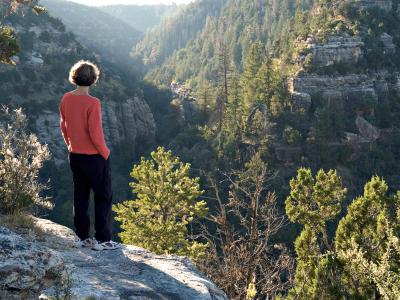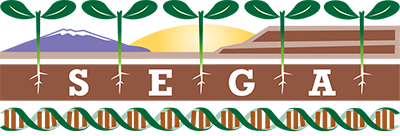You are here
History

The use of common garden experiments to examine the effects of genetic and environmental variation on plant performance has a rich history. The famous common garden experiments by Clausen, Keck, and Heisey (1947) clearly showed how plants can be locally adapted through the interaction of many genes with the environment. The U.S. Forest Service has a long history of using provenance trials to identify superior source populations and genotypes for use in commercial plantations and replanting projects.
The Southwest Experimental Garden Array, or SEGA, is an outgrowth of pioneering research conducted in the field of community genetics by members of the Cottonwood Ecology Group. The foundational research was conducted using common gardens to examine how individual genotypes of cottonwoods supported different communities of organisms and ecosystem processes such as nutrient cycling. These differences among trees were the result of differences in genetics-based chemical defenses and other traits that affected about 1,000 species of organisms. Such species as cottonwoods that affect many other species are known as “foundation” species or “ecosystem drivers.” They are especially important to study because they largely define a much larger community of understory plants, insects, microbes, birds, and mammals.
SEGA was initiated in 2012 with $4 million in seed funding from the National Science Foundation and Northern Arizona University to create a system of gardens along the elevation gradient in northern Arizona made famous by C. Hart Merriam. Taking advantage of the pronounced shift in vegetation types over just 50 km, which ranges from desert at 1,220 m to alpine tundra at 3,960 m at the top of the San Francisco Peaks, Merriam developed his life-zone concept of plant and animal distribution (1894). Because temperature and moisture predictably change with elevation, these gardens reflect climatic differences from desert to alpine forests that mimic the effects of climate change. The SEGA facility allows researchers to combine traditional reciprocal transplant and provenance trial experimental designs with state-of-the-art multi-factor climate change manipulations, enabling the integration of genetics and climate change research. This facility will allow research that scales from genes to ecosystems to test the genetic basis of plant performance along environmental gradients.
SEGA research will result in better informed predictions of the effect of climate change on individual genotypes, species, communities, and ecosystems. SEGA findings can be immediately implemented and tested for their ability to improve land management outcomes. SEGA holds the potential to: (1) provide a scientific basis for the concept of assisted migration; (2) identify drought-tolerant genotypes and source populations that perform best at a given location for current and expected future climatic conditions and buffer against loss of ecosystem function; and (3) develop techniques for managing exotic species that have become especially invasive with climate change.
Clausen, J., D.D. Keck, W.M. Hiesey. 1947. Heredity of geographically and ecologically isolated races. The American Naturalist 81: 114–133.
Merriam, C.H. 1894. Laws of temperature control of the geographic distribution of terrestrial animals and plants. National Geographic Magazine 6:229–238.
Theme by Danetsoft and Danang Probo Sayekti inspired by Maksimer
